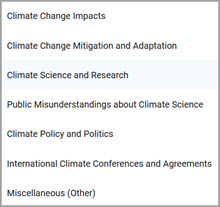A year after Russia’s invasion of Ukraine—one that was accompanied by an ominous cloud of allusions to nuclear use issued from Moscow—how goes the age of predatory nuclear-weapon states?
In short, the news is not good. Back in September, I laid out four possible futures: continuing the dangerous status quo, more nuclear-armed states, moves to end “problem states,” and—most desirable—moves toward the elimination of nuclear weapons. Unfortunately, the last year has shown more developments in futures one and two than in four, particularly with the status quo worsening on several fronts, while one hint at a future three scenario also emerged.
Starting in future one, while Russian President Vladimir Putin had publicly dialed back the nuclear rhetoric, declaring in December that Moscow has “not gone mad” and will not use nuclear weapons first, he announced last week that he was suspending his country’s compliance with the New START arms control agreement, the last remaining bilateral treaty between the United States and Russia.
The “good” news is that “suspending” is not the same as withdrawing, and the Russian ministry of foreign affairs clarified that Russia would still observe the treaty’s limit of 1,550 deployed long-range nuclear weapons, as well as continue to fulfill the treaty’s reporting requirements. However, Russia will continue to refuse to allow the United States to conduct verification inspections permitted under the treaty and will not meet to discuss any concerns either country has.
In addition, contrary to all international law, in October Putin announced that Russia was annexing four Ukrainian provinces. Nominally, under Russian nuclear doctrine, this means Putin could launch a nuclear strike should Ukraine or any country attack what is, according to Moscow, now Russian territory. Put another way, it further heightens the risk that Russia could decide to go nuclear if the war in Ukraine takes another turn for the worse for Moscow. In short, Putin believing he will lose the war if he does not further escalate is one of the likeliest paths to a nuclear conflict.
Meanwhile, in the United States, Congress rejected the decision by the Biden administration to cancel the new, nuclear-armed Sea-Launched Cruise Missile (SLCM-N) that was first proposed by the Trump administration. The Biden Nuclear Posture Review, released in October 2022, called for cancelling the SLCM-N, but after some senior military officials indicated continued support for the weapon, enough Democrats endorsed funding for it to overwhelm the president’s decision.
This January, South Korean President Yoon Suk Yeol declared that his country may consider acquiring nuclear weapons if North Korea continues expanding its arsenal. He later dialed back the comments, but his initial inclination reflect what opinion polls show is strong public support in South Korea for developing its own nuclear forces.
However, the loudest—and most bizarre—kerfuffle was between the United States and China, over a lost Chinese intelligence-gathering balloon that wandered across the US and close to some sensitive military sites, including nuclear missile silos spread across the central plains. The two countries, which had been making efforts to improve relations, fell into accusations and counter-accusations, with the United States cancelling a planned visit to Beijing by Secretary of State Antony Blinken. Instead, Blinken held an ill-humored session with his counterpart, Wang Yi, head of the Chinese ministry of foreign affairs in Germany.
Finally, in more bad news, just this week the International Atomic Energy Agency reported that Iran had enriched some uranium to very high levels, a fact that the government in Tehran sought to dismiss. Even before that report emerged, the US ambassador to Israel was quoted as saying “As President Biden has said, we will not stand by and watch Iran get a nuclear weapon, number one. Number two, he said, all options are on the table. Number three, Israel can and should do whatever they need to deal with and we’ve got their back.” (Emphasis added.) Those are clearly intended to be seen as threats to Iran.
In quieter news, inspired directly by the invasion of Ukraine, Finland and Sweden continue their plans to join the nuclear-armed NATO alliance. Opposition from Turkey is reportedly the primary holdup to their joining, which likely prompted the two countries to increase and highlight their efforts to support Turkey after the horrific earthquake there and in Syria.
In a more hopeful note, over 80 countries attended the first meeting of the states party to the Treaty on the Prohibition of Nuclear Weapons, including—in observer status—the NATO countries Belgium, Germany, Netherlands, and Norway, as well as NATO applicants Finland and Sweden. The plan revealed in the conference’s final document included a call for implementation of the treaty (sadly, unlikely) but “with the aim of further stigmatizing and de-legitimizing nuclear weapons and steadily building a robust global peremptory norm against them.” That is a worthy goal.
Finally, in other modest but positive notes, the Group of Twenty (G20), a major forum for international economic cooperation, agreed in November to a joint declaration stating that “The use or threat of use of nuclear weapons is inadmissible.” It was made in the context of Russia’s invasion of Ukraine and Putin’s nuclear threats, but the blanket condemnation of the use or threat of use of nuclear weapons is notable for its application to all nuclear-armed countries, including the United States which, like Russia, has a policy that allows first use of nuclear weapons.
And now Japan is pushing the Group of Seven (G7), another economic forum that includes the US, Canada, France, Germany, Italy, and the United Kingdom, to push for similar, if not stronger, language to the G20. The next G7 meeting will take place in May in Hiroshima, Japan, and for the first time ever the G7 final statement will include language on nuclear disarmament. Toward that end, UCS is a part of the Civil 7 Nuclear Disarmament working group, an official civil society initiative that feeds directly into the G7 process. We are advocating for strong language that recognizes the increased risk of nuclear war and for the G7 to agree to include consideration of that risk as an on-going feature of its work.
In sum, of the four possible nuclear futures that could flow from the invasion of Ukraine, two of those—continuing the downward-spiraling status quo and more countries seeking to join nuclear alliances or obtain nuclear weapons themselves—have seen significant development. A third—moves to eliminate the leadership of “problem” nuclear-weapon states—has seen threats to Iran.
Meanwhile, the fourth and most hopeful and sustainable future—a world free from the nuclear threat, where security is no longer based on nuclear deterrence—has seen little truly significant progress. However, there are some small positive signs, as seen in the G20 and forthcoming G7 statements, that there is enough recognition of the increased nuclear threat to warrant modestly unprecedented language condemning the use or threat of use of nuclear weapons.
I hope that that is just the start of more significant reconsideration of continued reliance on nuclear weapons in the future.

 1 year ago
52
1 year ago
52


